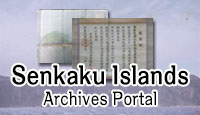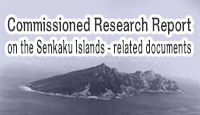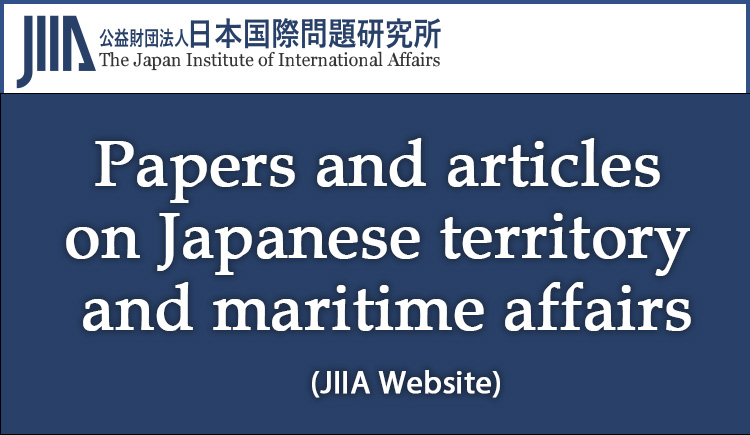The documents and materials published on this website were collected, researched, and prepared with advice from experts, as a part of a Government-commissioned project. The contents of this website do not reflect the views of the Government.
Comprehensive issues
ii. Consistency
If a party to the dispute made maps that consistently indicated the disputed territory as its own, whereas the maps produced by the other party to the dispute and a third country did not consistently depict the attribution of the disputed territory, then the former maps have superior evidentiary value.
In the Beagle Channel case, none of the maps which were produced by Chile and submitted to the arbitral tribunal depicted that the disputed territory was Argentine territory. On the other hand, maps produced by Argentina or a third country included both maps indicating that the disputed territory was Chilean territory and maps indicating it was Argentine territory. In addition, the maps produced by Chile consistently depicted the boundary in the same place, while only one of the maps produced by Argentina depicted the boundary claimed by Argentina at the time. Furthermore, most of the maps produced by a third country supported Chilean claims. Based on these facts, the arbitral tribunal concluded that the maps produced by Chile give the impression that they favor Chile’s position, whereas many of the maps produced by Argentina were doubtful or contradictory enough to deprive them of their evidentiary value.19
iii. Response of the parties to the dispute
If a State does not lodge protests or take other actions against a map that displays information unfavorable to its state, it could be deemed that the information shown on the map was adopted or acquiesced in by the State and it may not be able to claim title over the disputed territory. This is because there is a reasonable expectation that a State that is considered to be adversely affected will seek correction by the State that made the map.20
In the Minquiers and Ecrehos case, as one of the evidence showing that the sovereignty over the Minquiers belongs to the United Kingdom, the ICJ cited the fact that France did not express any reservations about the charts that listed all of the Minquiers and part of the Ecrehos as British territory.21 In the Beagle Channel case, one of the grounds for concluding that the disputed islands belong to Chile was the fact that the Argentine Congress had officially authorized the production of a map showing the disputed islands as Chilean territory, and that the Minister of the Interior had taken acts that made it appear as though he had approved the production of the map.22 In the Pedra Branca case, it was assessed that Malaysia considered the disputed islands to be under the sovereignty of Singapore, the reason being that Malaya, the predecessor of Malaysia, and Malaysia had published official maps with a note that the disputed islands were “Singaporean territory.”23
iv. When the maps were created
The evidentiary value of a map can vary greatly depending on the date of its production or publication. In general, maps produced or published by a party after a dispute emerges have less evidentiary value than those produced or published before the dispute arises.24 Of course, this is not the case if the party continues to produce and publish maps that are unfavorable to itself or contradictory to its claims even after the dispute arises.
Note19
Beagle Channel, supra note 14, pp. 168-169, 178, 182, paras. 144-145, 157, 162. See also, See also, Egypt-Israel Arbitration Tribunal: Award in Boundary Dispute concerning the Taba Area, 27 I.L.M., 1421 (1988), pp. 1484-1485, para. 219; ARAKI, supra note 11“, p. 17.
Note20
Eritrea and Ethiopia Case, supra note 9, p. 114, para. 3.21.
Note21
The Minquiers and Ecrehos Case, supra note 7, pp. 66-67, 71.
Note22
Beagle Channel Case, supra note 14, pp. 158-159, paras. 126-127; ARAKI, supra note 11, p. 9.
Note23
Sovereignty over Pedra Branca/Pulau Batu Puteh, Middle Rocks and South Ledge (Malaysia/Singapore), Judgment, I.C.J. Reports 2008, para. 272. See also, Territorial and Maritime Dispute (Nicaragua v. Colombia), Judgment, I.C.J. Reports 2012, p. 624, at 661-662, paras. 101-102.
Note24
Beagle Channel Case, supra note 14, pp. 167-168, para. 141.
3. Signs of Change
The ICJ has not abandoned its position of using maps only to confirm conclusions reached by other evidence, with the exception of maps attached as an integral part of official text such as treaties providing the attribution of territory. This may be proof of a deep-rooted perception among judges that drawing a political boundary, i.e., a boundary artificially created by humans, is “not a task for a cartographer.”25
On the other hand, it is certain that international tribunals are attaching greater importance to the evidentiary value of maps for confirming the will of a party related to a disputed territory.26 Tribunals have suggested that maps may become decisive evidence when there is no or insufficient evidence of territorial title.27 It is precisely because of this possibility that the parties to disputes have submitted a vast number of maps to international tribunals. The tribunals, too, have paid due respect to the efforts of the parties and have taken appropriate measures. All of the cases mentioned in this paper have judged the evidentiary value of maps upon carefully examining and without casually dismissing the claims made on the basis of the maps. International tribunals by no means underestimate the function of maps. Maps need to be collected and assessed with due consideration of this fact.
Note25
Kasikili/Sedudu Island (Botswana/Namibia), Judgment, I.C.J. Reports 1999, Separate Opinion of Judge Oda, p. 1134, para. 41.
Note26
Différend frontalier, supra note 9, p. 586, par. 62. Voir aussi, Différend frontalier (Burkina Faso/Niger), arrêt, C.I.J. Recueil 2013, p. 76, par. 68.
Note27
The tribunal judged in one case that maps are “important evidence of general opinion or repute” concerning the disputed territory. Award of the Arbitral Tribunal in the first stage of the proceedings between Eritrea and Yemen (Territorial Sovereignty and Scope of the Dispute), Decision of 9 October 1998, RIAA, Vol. XXII, p. 295, para. 381, pp. 321-322, para. 490. See also, Beagle Channel Case, supra note 14, p. 183, para. 163.
Senkaku Islands
Research and Commentary Site
- I Comprehensive issues
- II Commentary on themes by historical period
- III Analysis of claims by other countries





